| Reviews & Columns |
|
Reviews DVD TV on DVD Blu-ray 4K UHD International DVDs In Theaters Reviews by Studio Video Games Features Collector Series DVDs Easter Egg Database Interviews DVD Talk Radio Feature Articles Columns Anime Talk DVD Savant Horror DVDs The M.O.D. Squad Art House HD Talk Silent DVD
|
DVD Talk Forum |
|
|
| Resources |
|
DVD Price Search Customer Service #'s RCE Info Links |
|
Columns
|
|
|
Gate Of Hell: Criterion Collection
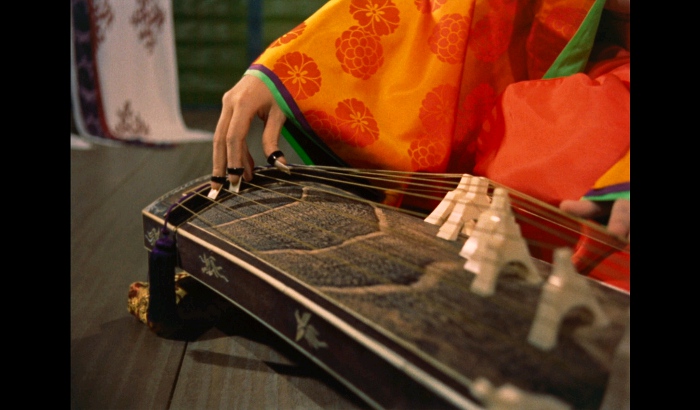 Teinosuke Kinugasa's Gate of Hell (1953) won the Palme d'Or grand prize at the Cannes Film Festival, as well as the Academy Award for best costume design. It also doubled as the first Japanese export to be fully produced in color...and as soon as you lay eyes on its rich, vivid hues, you'll understand why this visual stunner was a giant leap forward out of cinema's formative black-and-white years. Gate of Hell follows wild warrior Morito (Kazuo Hasegawa) as he defends Sanjo Castle from rebel forces. As the enemy closes in, Morito is tasked to protect the beautiful Kesa (Machiko Kyo), who serves as a decoy for the emperor's daughter. The two eventually escape and find shelter at the home of Morito and his brother Moritada (Kunitaro Sawamura), who has sided with the rebels. While the brothers quarrel, Kesa escapes to the home of her kind aunt. Morito isn't satisfied with their separation and wishes for her hand in marriage, pleading with Lord Kiyomori (Koreya Senda) to arrange the ceremony. Kiyomori quickly learns that Kesa is already wed to Wataru Watanabe (Isao Yamagata), a skilled swordsman and leader of the Imperial Guards. Needless to say, the determined Morito doesn't take "no" for an answer. Once the story gets moving, Gate of Hell gains momentum and maintains it through the closing moments. As Morito's stubborn lust for Kesa deepens, he resorts to a threat of violence against the young woman, her aunt and, eventually, Kesa's noble husband. Morito quickly becomes an unlikable but interesting central character, unwavering is his decision to make Kesa his bride. As Morito's plan unfolds, it takes a deadly turn that forces our "hero" to live with his sins in solitude. It's more than a linear tale with a twist ending, though: Gate of Hell reminds us that unchecked emotion often yields disastrous results. Perhaps Gate of Hell's most obvious strengths are its striking color palette and painterly appearance. Director Teinosuke Kinugasa made use of a new single-strip camera negative process from Eastman Kodak (Technicolor's main competitor), as well as Eastman 5248 film stock. The latter was relatively slow and, though it required much more light to capture images correctly, produced a vivid, crisp picture with a fine level of detail. As a result, Gate of Hell stands apart from most films of the era, especially if your only exposure to 1950s Japanese cinema is Seven Samurai, Tokyo Story, and the like. It's a technically proficient film that makes great use of color to intensify emotion and identify specific characters. These strengths are perfectly translated on Criterion's new Region A Blu-ray. Thanks to a brand new 2K restoration in 2011 (also used for last year's Region B release from Masters of Cinema), Gate of Hell looks younger and more vibrant than ever before. Though a lack of bonus features spoils the party a bit, this is still a release that Kinugasa fans should enjoy and appreciate. Let's take a closer look, shall we?
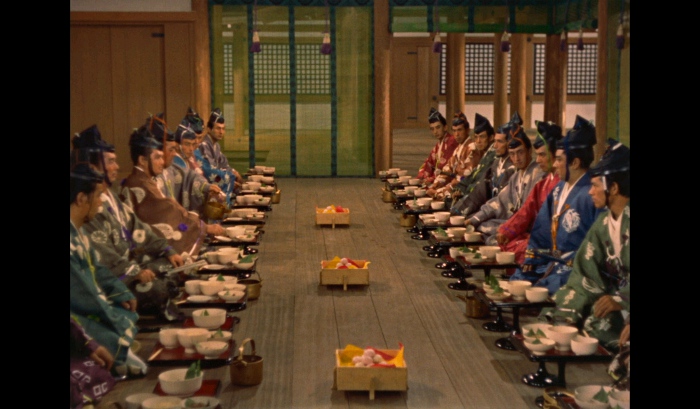
Not surprisingly, Gate of Hell's's captivating, vivid cinematography is rendered nicely on this crisp 1080p transfer, which retains the film's original 1.37:1 aspect ratio. Restoration was completed in 2011 by the National Museum of Modern Art in Tokyo and Kadokawa Shoten Co., Ltd., in cooperation with NHK, and the results are even better than you'd expect. Gate of Hell uses a particular film stock that produces vivid color and fine grain detail, but requires more light. As a result, outdoor sequences burst with color and only the darkest indoor scenes suffer slightly from lack of shadow detail. This was undoubtedly tough source material to work with, but Criterion's Blu-ray highlights every strength perfectly. Those who have only watched Gate of Hell on television or VHS will immediately notice an improvement, while anyone accustomed to seeing classic Japanese period films in black and white will also be pleasantly surprised.
DISCLAIMER: These promotional images are strictly decorative and do not represent Blu-Ray's native 1080p resolution. The Japanese LPCM 1.0 mono track is perfectly acceptable overall, as neither the dialogue nor the occasionally unsettling music cues fight for attention. Several light hisses and crackles are present during a handful of sequences, but it's nothing major and Criterion undoubtedly did what they could to preserve the aging source material. Optional English subtitles have been presented during the main feature.
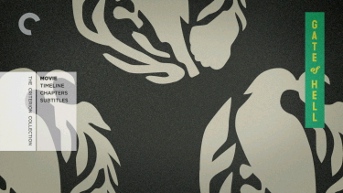 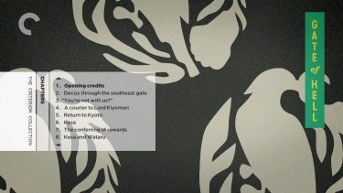
Teinosuke Kinugasa's Gate of Hell is saddled with a somewhat convoluted first act, but the obsession of our stubborn central character establishes momentum and an unsettling, intense edge that should easily captivate those who submit to its charms. The film's colorful cinematography looks better than ever on Criterion's Blu-ray, thanks to the recent 2K restoration and Gate of Hell's particular film stock. Its higher price (and lack of supplements) might keep casual viewers from a "blind buy", but the strength of this Blu-ray's 1080p transfer makes Gate of Hell a worthy purchase for established fans. Recommended.
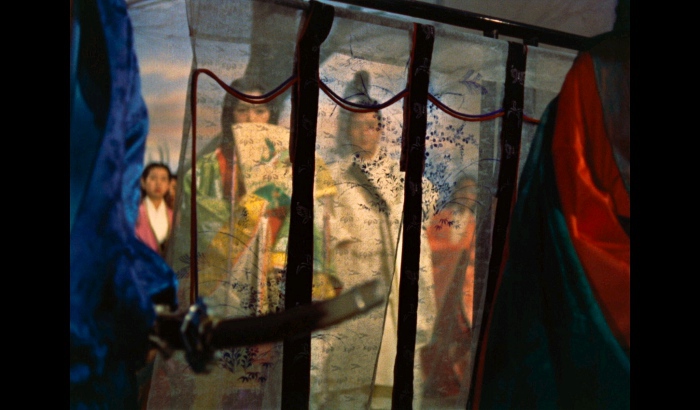 |
|
| Popular Reviews |
| Sponsored Links |
|
|
| Sponsored Links |
|
|
| Release List | Reviews | Shop | Newsletter | Forum | DVD Giveaways | Blu-Ray | Advertise |
|
Copyright 2024 DVDTalk.com All Rights Reserved. Legal Info, Privacy Policy, Terms of Use,
Manage Preferences,
Your Privacy Choices | |||||||















